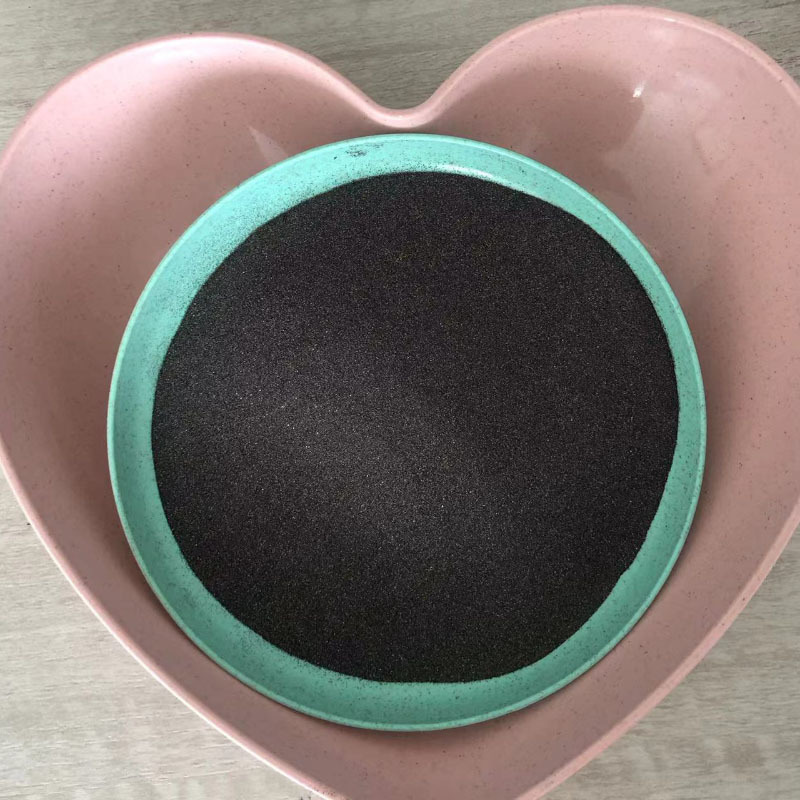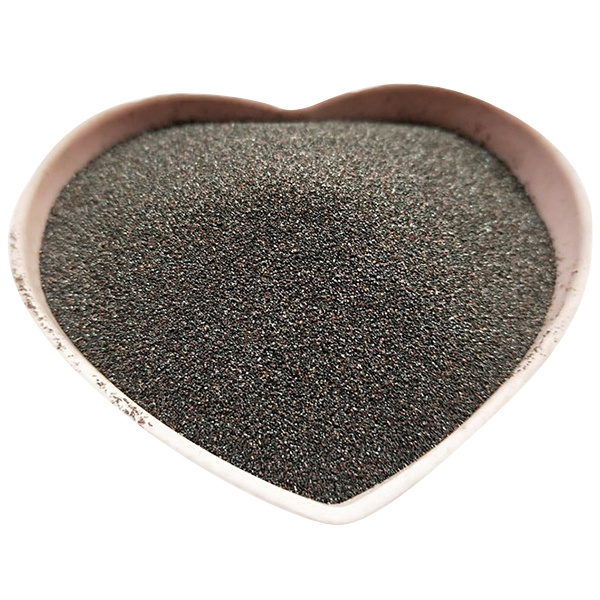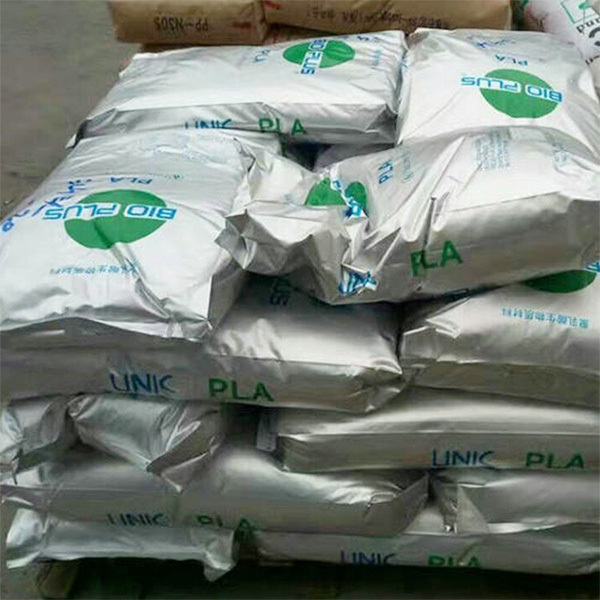Rutile Sand 95% in Research and Development: A Game-Changer for New Chemical Materials
Release Time:
Jul 23,2025
Rutile Sand 95% in Research and Development: A Game-Changer for New Chemical Materials Rutile sand, a naturally occurring mineral composed primarily of titanium dioxide (TiO2), has garnered significant attention in recent years due to its high purity levels and diverse applications in various industries. With a purity level of 95%, Rutile sand is emerging as a critical component in the development
Rutile Sand 95% in Research and Development: A Game-Changer for New Chemical Materials
Rutile sand, a naturally occurring mineral composed primarily of titanium dioxide (TiO2), has garnered significant attention in recent years due to its high purity levels and diverse applications in various industries. With a purity level of 95%, Rutile sand is emerging as a critical component in the development of innovative chemical materials. This article explores the implications of Rutile sand 95% in research and development, illustrating its potential as a game-changer in the field.
Table of Contents
- 1. Introduction to Rutile Sand
- 2. Properties of Rutile Sand 95%
- 3. Applications of Rutile Sand in Various Industries
- 4. Current Research and Development Trends
- 5. Benefits of Using Rutile Sand 95%
- 6. Challenges in Utilizing Rutile Sand
- 7. The Future of Rutile Sand in Chemical Materials
- 8. Conclusion
- 9. FAQs
1. Introduction to Rutile Sand
Rutile sand is a critical source of titanium dioxide, known for its vibrant color and high refractive index. Found in various geological settings, it is primarily mined for its titanium content, which is an essential ingredient in paint, plastics, and other manufacturing processes. As the demand for high-quality titanium dioxide continues to rise, the significance of Rutile sand 95% becomes increasingly apparent. This article aims to explore the various aspects of Rutile sand in research and development, highlighting its game-changing potential.
2. Properties of Rutile Sand 95%
Rutile sand 95% is characterized by several essential properties that make it suitable for a wide range of applications:
2.1 Chemical Composition
Rutile sand primarily consists of titanium dioxide (TiO2) in its mineral form. The 95% purity level signifies its high concentration of TiO2, with minimal impurities, making it highly desirable for industrial applications.
2.2 Physical Properties
The physical properties of Rutile sand include a high melting point, excellent thermal stability, and resistance to corrosion. These traits make it suitable for use in environments where high temperatures and chemical exposure are prevalent.
2.3 Optical Properties
Rutile sand exhibits exceptional optical characteristics, including a high refractive index and strong light scattering capabilities. These properties make it a preferred choice in applications requiring pigment performance, such as coatings and plastics.
3. Applications of Rutile Sand in Various Industries
Rutile sand's versatility allows it to be utilized in numerous industries:
3.1 Paints and Coatings
In the paints and coatings industry, Rutile sand 95% is a critical component due to its ability to enhance color retention and opacity. Its high refractive index ensures vibrant finishes, making it a sought-after ingredient in premium paint formulations.
3.2 Plastics and Polymers
Rutile sand is also used in the production of plastic materials. Its reinforcing properties enhance the mechanical strength of polymers, leading to improved durability and performance in various applications.
3.3 Ceramics and Glass
In the ceramics and glass industries, Rutile sand is used to improve the strength and aesthetic appeal of finished products. Its high melting point allows for better structuring during the firing process, leading to superior end products.
3.4 Electronics
As the electronics sector continues to evolve, Rutile sand's properties make it an essential ingredient in the manufacturing of semiconductors and other electronic components. Its thermal stability contributes to the longevity and reliability of electronic devices.
4. Current Research and Development Trends
Ongoing research and development in the field of Rutile sand focus on several key areas:
4.1 Nanotechnology
Recent studies have investigated the use of Rutile sand in nanotechnology applications. The development of nano-sized Rutile particles shows promise for enhancing the functionality of various materials, from electronics to biomedical applications.
4.2 Sustainable Practices
The chemical industry is increasingly shifting towards sustainable practices. Research on environmentally friendly extraction and processing methods for Rutile sand aims to reduce environmental impact while maintaining high-quality output.
4.3 Enhanced Formulations
Researchers are exploring advanced formulations that incorporate Rutile sand to optimize performance in coatings, plastics, and other materials. These innovative approaches aim to leverage Rutile sand's unique properties to create superior products.
5. Benefits of Using Rutile Sand 95%
The use of Rutile sand 95% offers numerous advantages for manufacturers and researchers alike:
5.1 High Purity Levels
With a purity of 95%, Rutile sand delivers consistent quality and performance, ensuring reliable results in various applications. High purity helps minimize complications arising from impurities.
5.2 Versatile Applications
The diverse applications of Rutile sand across multiple industries make it a valuable resource. Its adaptability allows for innovation and development in various fields, from construction to electronics.
5.3 Economic Viability
Utilizing Rutile sand can lead to cost-effective solutions for manufacturers. Its properties can enhance product performance, leading to higher customer satisfaction and potential market growth.
6. Challenges in Utilizing Rutile Sand
Despite its numerous benefits, the use of Rutile sand also presents challenges:
6.1 Supply Chain Issues
The extraction and processing of Rutile sand can face supply chain disruptions due to geopolitical factors and environmental regulations. Ensuring a stable supply is critical for consistent production.
6.2 Environmental Concerns
Mining activities can have significant environmental impacts. Addressing these concerns through sustainable practices is essential for the long-term viability of Rutile sand in the industry.
6.3 Market Competition
As more industries recognize the value of Rutile sand, competition for sourcing and production may increase. Companies must differentiate their offerings to maintain a competitive edge in the market.
7. The Future of Rutile Sand in Chemical Materials
The future of Rutile sand in the realm of chemical materials looks promising. With ongoing advancements in research and technology, its applications are likely to expand further. As industries move towards sustainability, the development of eco-friendly extraction methods will become increasingly important. Innovations in nanotechnology could open new avenues for Rutile sand, enhancing its versatility and applicability in various fields.
8. Conclusion
Rutile sand 95% represents a significant advancement in the field of new chemical materials. Its exceptional properties and diverse applications position it as a game-changer in various industries, from paints and coatings to electronics and nanotechnology. As research and development continue to explore its potential, Rutile sand is set to play a crucial role in shaping the future of chemical materials. By leveraging its benefits while addressing the challenges, industries can harness the power of Rutile sand to drive innovation and growth.
9. FAQs
9.1 What is Rutile Sand 95%?
Rutile Sand 95% is a high-purity mineral primarily composed of titanium dioxide, known for its diverse applications in industries like paints, plastics, and electronics.
9.2 How is Rutile Sand used in the paint industry?
In the paint industry, Rutile Sand enhances color retention and opacity, contributing to the vibrancy and durability of finished products.
9.3 What are the environmental impacts of Rutile Sand mining?
Mining Rutile Sand can lead to environmental concerns, including habitat disruption and pollution. Sustainable practices are essential to mitigate these effects.
9.4 How does Rutile Sand contribute to the electronics industry?
Rutile Sand's thermal stability and high purity make it a valuable component in manufacturing semiconductors and other electronic devices, enhancing their reliability and performance.
9.5 What are the future trends for Rutile Sand in research and development?
The future trends include advancements in nanotechnology, sustainable extraction methods, and enhanced formulations that leverage Rutile Sand's unique properties for improved product performance.
Keywords:
You Can Also Learn More About Industry Trends





